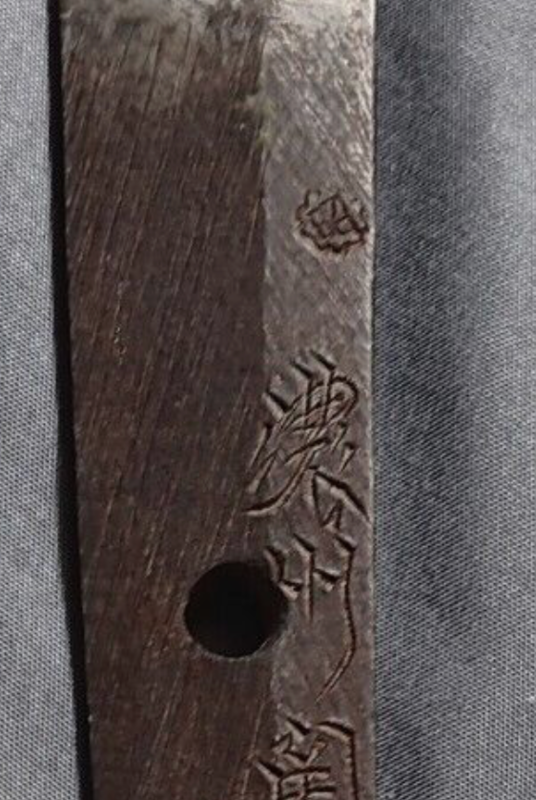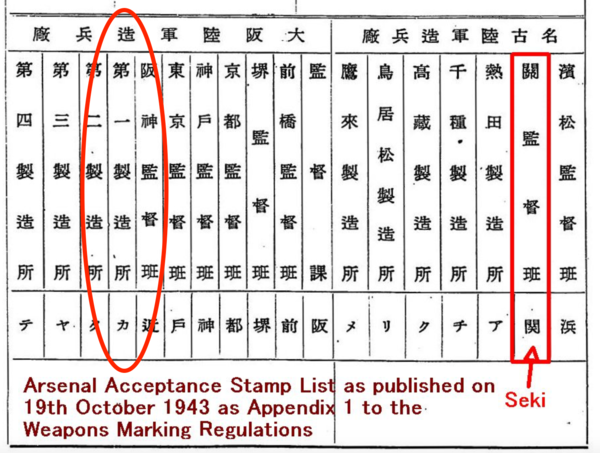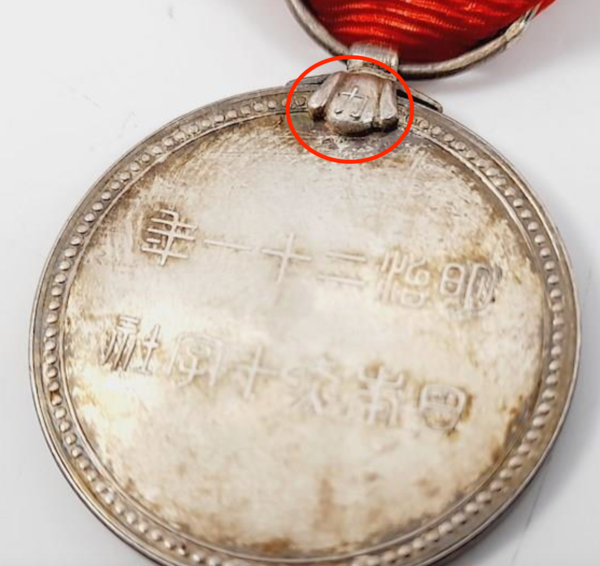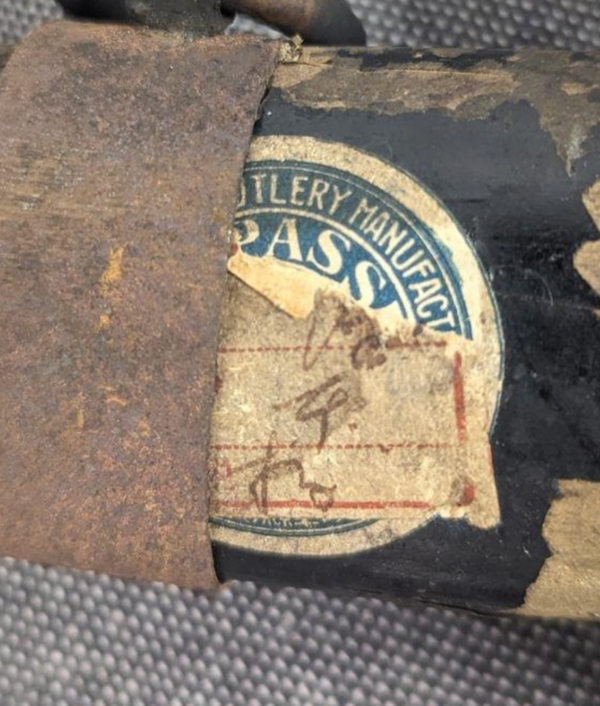
John C
Members-
Posts
2,625 -
Joined
-
Last visited
-
Days Won
17
Content Type
Profiles
Forums
Events
Store
Downloads
Gallery
Everything posted by John C
-
What do you all think? I know the jury is still somewhat out on this topic, particularly prior to 1942, however the seller claims this to be a water quenched gendaito - but with a showa stamp. Has anyone seen a traditionally made blade with this stamp? Kanenori (who made both showato and gendaito); no date. https://www.ebay.com...030039&segname=11051 John C.
-
It looks as if most of that pile are missing the kabutogane - maybe these were unfinished?? John C.
-
@Bruce Pennington For your files - on a Kanenori showato. https://www.ebay.com/itm/176255601899 John C.
-
I don't think the wording refers to the university, just Osaka army arsenal. But the article mentioned the University being part of it as a research facility. John C.
-
Yes...according to google app, anyway. From right to left starting at KA = 1st, 2nd, 3rd, 4th factories. John C.
-
So I was perusing some Nick Komiya's articles and came across a document we have seen a few times. But this time I focused on a different column (please see the circled column). It has the KA mark listed for the First Factory of Osaka University Army [military] research facility. According to one article, they were involved in equipment development. May be nothing. But I thought it was interesting - something I hadn't noticed before. John C.
-
@Bruce Pennington I hope this is another piece of the puzzle. On page 23 of the stamps doc, you note a "KA" symbol with unknown purpose. I found the same mark on a Japanese Red Cross medal. According to Peterson's Orders and Medals of Japan, he says this was used as a kind of mint mark. Unfortunately, he doesn't say from which facility. But if there were a facility that made both swords and medals........ John C.
-
katana translation request (late 1500s?)
John C replied to yellowquestion's topic in Translation Assistance
Just to follow up; the wrap could still be period, though not original. Field alterations done by the service personnel who owned the sword was quite common. in fact, there were teams of official repair personnel that did field repairs on swords, though these would be done to military specs. John C. -
Adam: I personally do not think he is as bad as some others on Ebay. I have bought two swords from him - both ww2 era so I knew what I was getting. The transactions went smoothly and the swords were just as described. For nihonto, you really need to be educated because he will not make a commitment about the condition of the sword. He expects the buyer to know what they are looking at. Many of his "gendaito" appear to have the same nakago, hamon, etc. and always come with the warning "unproven signature. Bid on the steel." I would stay away from these, personally, unless you just want something for tamashigiri or iaido. I too have noticed his swords listed with origami are usually pre-1980 green papers. I would treat these as un-papered swords. He does have some swords with current origami and I know he sells on consignment, so maybe these are okay. Just my two cents. John C.
-
katana translation request (late 1500s?)
John C replied to yellowquestion's topic in Translation Assistance
Fred: I could be a type 94/98, however the tsuka ito wrap does not look original so it would be difficult to tell. The pierced tsuba is an older design. And yes, some officers had their family blades outfitted in gunto mounts for service. Family blades were also donated for this purpose due to blade shortages. John C. -
Bought as Chinese fake but wondering. Nakano Eizo ?
John C replied to Forte's topic in Military Swords of Japan
Richard: The mounts are trying to be Navy type 97. Not sure if they real. Saya parts might be legit, though the tassel probably not. John C. -
Not sure it's accurate, however google app has it as Gordeku. John C.
-
That's great info, guys! Thank you! It gives me something to study. I have several sources of kanji, however I'm trying to figure out this scratchy style as well. John C.
-
@Bruce Pennington For your files - another Seki Cutlery label. Unfortunately, no other information. Looks like it may have the inspector's initials. https://shopgoodwill.com/item/195384731 John C.
-
Well...he does sell real swords but with a huge caveat. Everything will have some sort of flaw, defect, or other issue (such as gimei). He leaves it up to the buyer to figure it out and bid accordingly. So basically think used car salesman presenting a BMW. Is it a BMW? Yes - but ask why it's being sold in the used car lot and not the new car lot. I think the rust is on top of the gold in this case. John C.
-
I was trying to look for signs of it being inlaid or written on the surface. I found a couple of spots where I can see a shadow (indicating inlay) and the rust is covering some characters but I'm still learning what to look for. Does it seem "too" nice for 1670?? John C. p.s. not interested in buying just learning.
-
Dejaun: Probably buddhist sanskrit but well worn. John C.
-
Not sure because it's torn off. Google app can't read it either. Here's the whole thing. I think the name on the front is probably the shrine name, however I haven't looked it up yet. John C
-
Thank you, Steve. I got the shi character, however the scratchy style cutting is difficult for me to even look up. I appreciate it. John C.
-
Just curious what you all think about the legitimacy of this cut test. Trying to learn more about them. The tester is not listed in Guido Shiller's "List of popular sword testers in saidan-mei". https://www.ebay.com/itm/166679064949 John C.
-
Hello: I picked this up to practice translating and failed miserably. Pic one I think is SADAMORI on the left and 1939 on the right but the middle has me stumped. Pic 2 has me completely baffled. Any help would be appreciated. John C.
-
Ian: You might also consider that the sword is simply gimei. The date and style of signature may not have an actual reference for you to find. I think at this point you will need to start kantei and focus on the features of the blade. John C.
-
I was thinking NU at first, but you are probably right with NE. John C.
-
Hunter: It looks like the painted assembly numbers are 819. Is this number stamped on any of the parts? John C.
-
"Japanese Gunto" currently at 400 dollars
John C replied to John C's topic in Auctions and Online Sales or Sellers
I agree. Probably a mistake. And at least they corrected it. John C.













